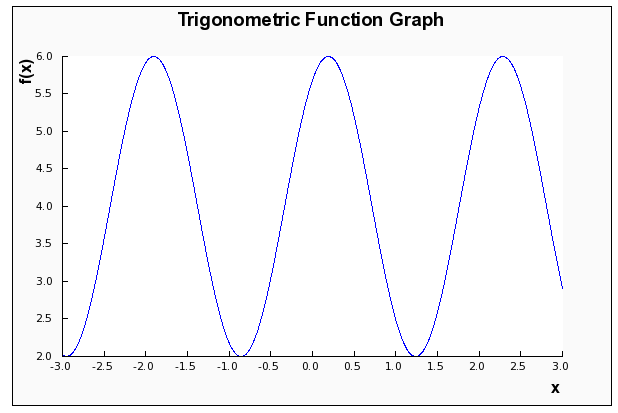Discriminant Formula Calculator
Instructions: Use this calculator to find the discriminant of a quadratic equation, showing all the steps. Please type in a valid quadratic equation in the form box below.
Discriminant Formula
This calculator will use the discriminant formula showing all the steps for a quadratic equation that you provide.
You need to provide a valid quadratic equation, something like 2x²+x-1=0, which comes already simplified, or you can provide something that is a valid quadratic expression, but needs further simplification like 2x²+3x-1 = 3/4x - 4/5.
Once a valid quadratic equation is provided, all you need to do is to click the "Calculate" button, and all the steps of the calculation will be provided to you.
The simplified quadratic equation in the form ax² + bx + c = 0 will be used for the calculation of the discriminant, which will indicate right away the nature of the roots: Two real roots, one real root, or two complex roots.

The discriminant formula
How to find the discriminant of a quadratic equation? Once you have the quadratic equation in the form ax² + bx + c = 0, you can apply directly the discriminant formula:
\[\displaystyle \Delta = b^2 - 4ac\]Discriminant meaning
Once you have applied the above formula, and you get a value \(\Delta\) for the discriminant, what is its meaning?
- Step 1: If \(\Delta > 0\): Then the quadratic equation has two different real roots
- Step 2: If \(\Delta = 0\): Then the quadratic equation has only one real root
- Step 3: If \(\Delta < 0\): Then the quadratic equation has two conjugate complex roots
What is the meaning of two conjugate complex roots? Graphically, it is simply a parabola that does not cross the x-axis.
On the other hand, two different real roots implies graphically that the parabola crosses the x-axis at two points. A discriminant equal to zero indicates that the parabola is tangent to the x-axis.
Why would care about the discriminant?
The discriminant provides you with an easy form to assess the types of root a quadratic equation has, without actually solving the equation.
Naturally, we can see that the discriminant literally appears in the quadratic formula, so it is obviously linked with the process of calculating quadratic roots.

Example: Calculating discriminant
Find the discriminant of the following equation: \(x^2+ 3x + 10 = 0\)
Solution: We need to solve the following given quadratic equation \(\displaystyle x^2+3x+10=0\).
For a quadratic equation of the form \(a x^2 + bx + c = 0\), the discriminant is computed using the following formula:
\[\Delta = \displaystyle b^2-4ac\]In this case, we have that the equation we need to solve is \(\displaystyle x^2+3x+10 = 0\), which implies that corresponding coefficients are:
\[a = 1\] \[b = 3\] \[c = 10\]Plugging these values into the formula we get:
\[\Delta = b^2-4ac = \displaystyle \left( 3\right)^2 - 4 \cdot \left(1\right)\cdot \left(10\right) = -31\]Therefore, the discriminant for the given quadratic equation is \(\Delta = \displaystyle -31 < 0\), which is negative, and that indicates that the given equation \(\displaystyle x^2+3x+10=0\) has two different conjugate complex roots.
This concludes the calculation of the determinant.
Example: Discriminant calculation
Find the discriminant of the following equation: \(3x^2 - 2x + 4 = 0\)
Solution: In this case, since the quadratic equation we need to solve is \(\displaystyle x^2+3x+10 = 0\), which is in its simplified form, the corresponding coefficients are:
\[a = 3\] \[b = -2\] \[c = 4\]Plugging these values into the above formula we find that:
\[\Delta = b^2-4ac = \displaystyle \left( -2\right)^2 - 4 \cdot \left(3\right)\cdot \left(4\right) = -44 \]So then, the discriminant for the given quadratic equation is \(\Delta = \displaystyle -44 < 0\), which is negative. Therefore, the given equation \(3x^2 - 2x + 4 = 0\) has two different conjugate complex roots.
This concludes the calculation.
Example: Discriminant Meaning
Without solving the equation \(2x^2 - 3x - 10 = 0\), indicate the nature of its roots.
Solution: In this case, we need to solve is \(2x^2 - 3x + 1 = 0\), so then the corresponding coefficients are:
\[a = 2\] \[b = -3\] \[c = -10\]Plugging these values into the determinant formula we find that:
\[\Delta = b^2-4ac = \displaystyle \left( -3\right)^2 - 4 \cdot \left(2\right)\cdot \left(-10\right) = -44 \]So then, the discriminant for the given quadratic equation is \(\Delta = 89 > 0\), which is positive. Therefore, without solving the equation, we know that the given equation \(2x^2 - 3x - 10 = 0\) has two different real roots.
More quadratic calculators
Dealing with quadratic functions and equations is very common in Algebra. Computing roots of quadratic equations is tightly linked with computing a discriminant and finding the vertex.
Geometrically, the discriminant will indicate the type of disposition of a the parabola that represents the quadratic function and the x-axis.




